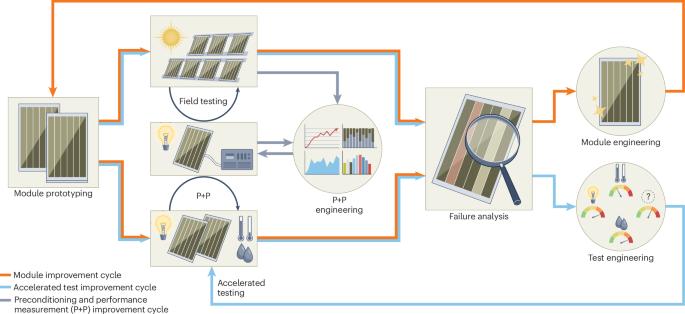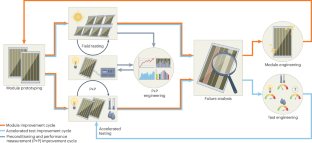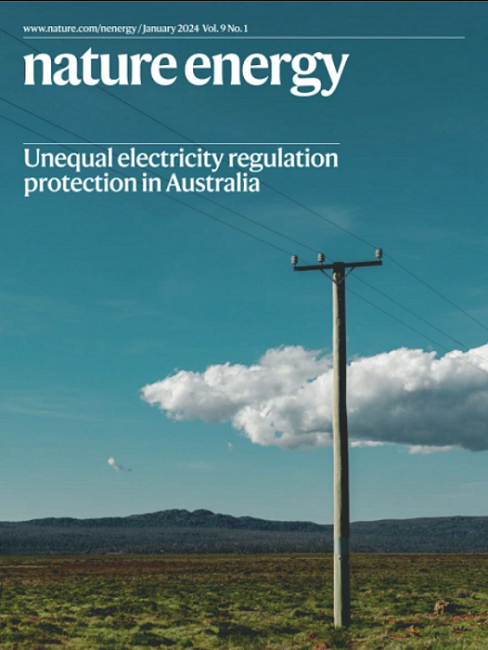Durability research is pivotal for perovskite photovoltaics
IF 60.1
1区 材料科学
Q1 ENERGY & FUELS
引用次数: 0
Abstract
Metal halide perovskite solar cells have shown promising power conversion efficiencies, but commercialization requires that decent durability is also demonstrated. Under normal operation, solar cells are subject to a complex combination of stressors, such as visible light, ultraviolet light, heat, humidity, mechanical stress and electric potential, which complicates the understanding of failure mechanisms. Existing stress tests do not act as a time machine. In new materials systems such as perovskite photovoltaics, the tests have no known relationship to field service. In this Perspective we recommend following a durability learning cycle that interleaves photovoltaic module engineering with field testing; accelerated testing; and preconditioning and performance engineering. We advocate for field testing to demonstrate real-world performance and identify field-relevant failure modes, and urge the community to develop accelerated and qualification tests that account for device metastability, variations in material composition and different/various processing methods. These practices are more difficult, but more important, than the simple pursuit of higher initial efficiencies. Perovskite photovoltaics have achieved high power conversion efficiencies, yet their durability remains to be proven. This Perspective presents a number of approaches with a view to addressing durability challenges.


耐久性研究是钙钛矿光伏电池的关键
金属卤化物钙钛矿太阳能电池已经显示出有希望的能量转换效率,但商业化也需要证明良好的耐用性。在正常工作情况下,太阳能电池受到可见光、紫外光、热、湿度、机械应力和电势等复杂应力源的影响,这使得对失效机制的理解变得复杂。现有的压力测试并不能充当时光机。在钙钛矿光伏等新材料系统中,测试与现场服务没有已知的关系。从这个角度来看,我们建议遵循耐久性学习周期,将光伏组件工程与现场测试交叉进行;加速测试;以及预处理和性能工程。我们提倡现场测试以展示真实世界的性能并确定与现场相关的失效模式,并敦促社区开发加速和资格测试,以考虑器件亚稳态、材料成分变化和不同/各种加工方法。这些实践比简单地追求更高的初始效率更困难,但也更重要。
本文章由计算机程序翻译,如有差异,请以英文原文为准。
求助全文
约1分钟内获得全文
求助全文
来源期刊

Nature Energy
Energy-Energy Engineering and Power Technology
CiteScore
75.10
自引率
1.10%
发文量
193
期刊介绍:
Nature Energy is a monthly, online-only journal committed to showcasing the most impactful research on energy, covering everything from its generation and distribution to the societal implications of energy technologies and policies.
With a focus on exploring all facets of the ongoing energy discourse, Nature Energy delves into topics such as energy generation, storage, distribution, management, and the societal impacts of energy technologies and policies. Emphasizing studies that push the boundaries of knowledge and contribute to the development of next-generation solutions, the journal serves as a platform for the exchange of ideas among stakeholders at the forefront of the energy sector.
Maintaining the hallmark standards of the Nature brand, Nature Energy boasts a dedicated team of professional editors, a rigorous peer-review process, meticulous copy-editing and production, rapid publication times, and editorial independence.
In addition to original research articles, Nature Energy also publishes a range of content types, including Comments, Perspectives, Reviews, News & Views, Features, and Correspondence, covering a diverse array of disciplines relevant to the field of energy.
 求助内容:
求助内容: 应助结果提醒方式:
应助结果提醒方式:


